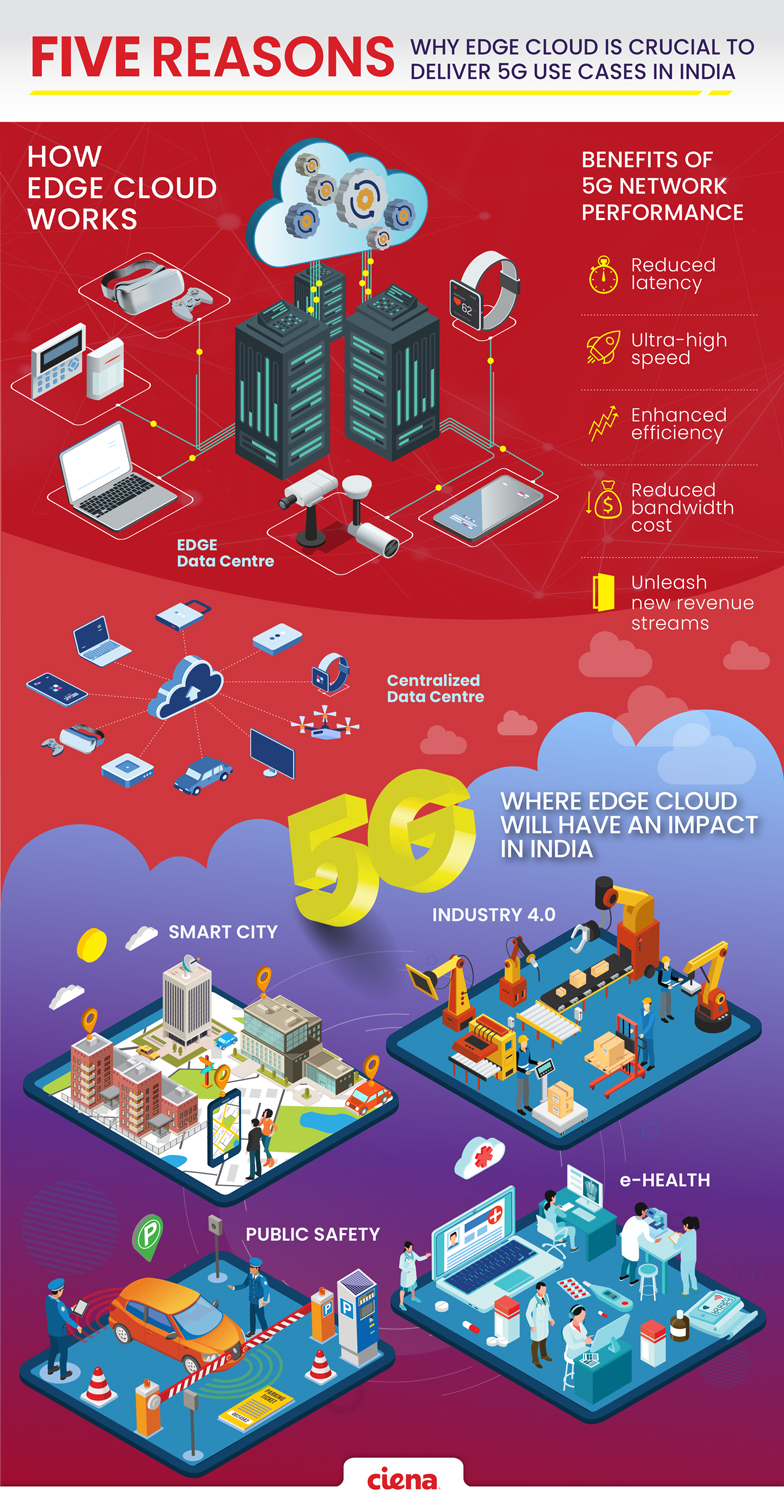5G Perspective
How edge cloud can enable 5G

Indian service providers are preparing now for the forthcoming move to 5G. To provide maximum value, 5G can benefit from Multi-access Edge Computing (MEC) to drive demand for its services. Several new business models and use-cases will emerge and open up new revenue streams for service providers.
India’s rapid strides in developing over 100 smart cities and building Digital India are increasingly calling for faster networks. From a sports enthusiast watching a gripping cricket match on the Hotstar app to an online gamer to a farmer applying for digital land records via a mobile device, there is a growing demand for service providers to provide high-speed, low-latency network services.
While these use-cases will be facilitated with forthcoming 5G, they also require cloud-like compute and storage resources physically situated closer to end-users, humans and machines. These data centers are networked together to create an ‘Edge Cloud’, which is geographically separated data centers networked to each other and to centralized cloud data centers.
Edge Cloud can also play a significant role in turning a country like India into a global manufacturing hub. For example, a smart factory with thousands of Internet of Things (IoT) sensors embedded into hundreds of machines, each sending data back and forth to the data center to determine the next action. What if, IoT devices process some of the information on their own, some to a nearby Edge Cloud data center, and only a fraction of data to distant centralized data centers? That brings down the overall network load, improves decision-making time, makes operations more reliable, and increases security as critical information can hosted closer to end-users, such as an on-premise edge data center.
In fact, to turn India into a global manufacturing hub, remote assistance and robotic control, supported through 5G in combination with MEC, could replace manual, error-prone tasks in hazardous environments such as mines, thereby increasing process quality and reducing production time.
A system of collaborative robots could allow smart factories across geographies to learn from one another through AI processes. Robots would then no longer need to be the onsite processors of the data and could offload to the Edge Cloud, thereby increasing agility and lowering energy consumption.
Edge to the foreground
If the Edge Cloud capabilities have existed for decades in your phone, laptop, an office server, and onsite corporate data center, then why are we talking about it in 2020?
5G networks will deliver step increases in network speeds when compared to 4G LTE. However, to deliver upon the Ultra-Reliable Low Latency Communications (URLLC) category of 5G use-cases, MEC is required, which will be provided by Edge Cloud. Several mobile functions required for a 5G network to operate will also leverage Edge Cloud resources.
Enabling new realities
The next level of performance offered by Edge Cloud will unleash a new world of applications including smart farming, smart factory, connected freight, smart transportation, and smart grids. Essentially, Edge Cloud complements the high-capacity and mobility provided by 5G with much lower latency.
For instance, operation of autonomous vehicles could be complemented by in-road sensors that can alert autonomous vehicles with hazardous road conditions, requiring a highly reliable and low latency network. By combining a 5G mobile network services with MEC, latency to deliver data from in-road sensors is significantly reduced, making such cars safe and reliable because lives are at stake.
Similarly, for mobile gamers, new user experiences that combine virtual reality with massive multiplayer online gaming is facilitated when 5G networks leverage nearby MEC resources.
Over the next few years, we can expect to see tens of thousands of new scaled-down data centers at the edge of the network that when interconnected, form Edge Cloud. According to ResearchAndMarkets.com, the annual global Edge Data Center services market is expected to increase by more than $7 billion by 2024, which means we are already in the midst of a surge in the number of new edge data centers rollouts.
5G incomplete without Edge Cloud
When combined with the optimized high-speed performance of 5G, Edge Cloud significantly reduce round-trip times. More importantly, edge data centers can be on or off-premises to support applications and use-cases over wireline and wireless networks.
5G and Edge Cloud are inseparable for any telecom provider. And as Indian service providers prepare their move towards 5G, they can consider Edge Cloud strategies to make 5G use-cases a commercial success.















You must be logged in to post a comment Login